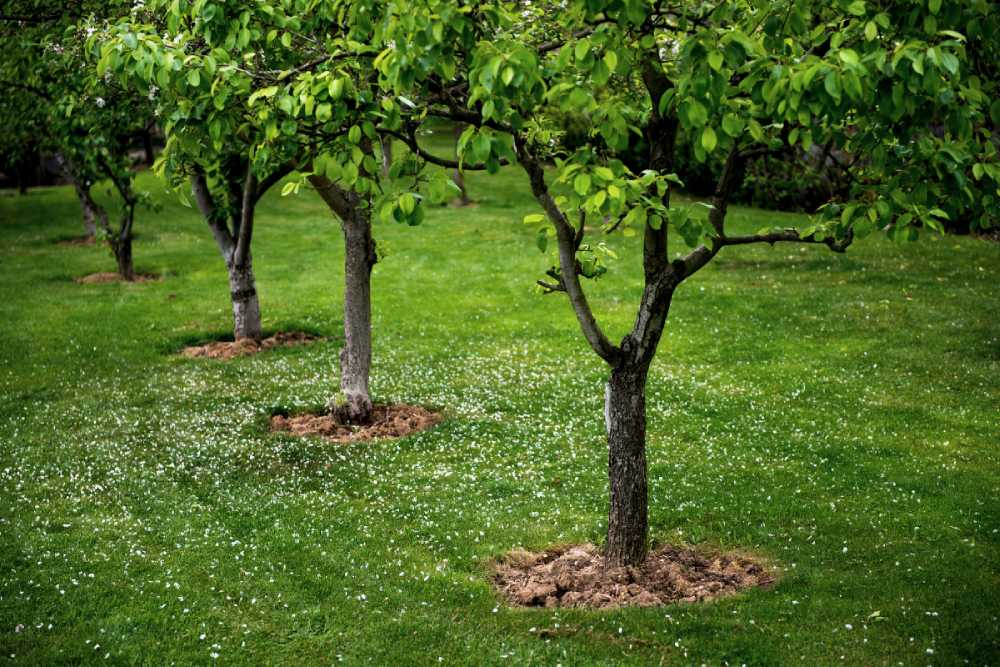
Spring is here and every day we’ll see something newly green poking up from the soil. The cycle of growth and dormancy may seem like a great mystery that doesn’t need human intervention, but the truth is plants and trees can be given a chance to improve their growth with just a little bit of help from us. The following article provides a checklist of how to give your trees and plants the best spring they can have.
Spring Cleaning is for Outside, Too
One of the first things homeowners typically want to do when the weather is warm enough to spend time outside is to clean up the dead leaves and branches that have fallen. This is a good time to take a close look at your trees:
- Are there any signs of frost damage? This year has been hard for all plants because of the cold snap in March, which damaged many small shrubs and vines, thousands of peach trees, and other plant material. Being aware of plant stress is important.
- Are there stability issues with your tree? Look for any cracks, heaving roots, or fungal conks (in other words, mushrooms) on the trunk or base of your tree. Any of these would be a major concern.
- Are there dead limbs in the canopy? A few dead limbs – especially in the shadiest parts of the canopy – is usually OK, but a pattern of widespread dead limbs is more concerning. Typically, fungi which grow on dead wood is different from those fungi which cause problems with the tree’s root system. So don’t worry if you see some little mushrooms on the dead limbs.
- Trees thrive in an environment with decomposing leaves and branches. So while you’re cleaning up your yard, bear in mind that the accumulation of organic matter is actually good for trees, as long as it’s not piled up too deep right around the base of the tree. So depending on the design of your landscape, you can can sometimes recycle last year’s leaves and branches into this year’s mulch beds!
The quicker a problem is noticed with your tree, the higher the likelihood that it can be fixed.
Tree Pruning and Tree Trimming
Pruning and trimming are similar in that both involve the removal of branches. Technically, “pruning” can mean limb removal for the benefit of the tree’s future form or health, while “trimming” often means limb removal for clearance or other civic benefit. In practice, the terms are used interchangeably!
Proper pruning can accomplish all kinds of different objectives:
- Reducing the risk of branch failure or dead branches falling
- Reducing the risk of uprooting failure – otherwise known as a fallen tree (and should you have a tree uproot, you can go here to learn what steps you need to take if that should occur)
If a homeowner is concerned about their ability to prune properly, they should consult with a tree service company who can advise them or do the tree pruning for them.
Mulch, Compost, and Fertilizer
Renewing soil’s nutrients is vital to plant growth. Organic mulch and compost mimic the natural cycle of decay and return to the soil the nutrients that the trees and plants take from it. Fertilizer is like a mass produced multi-vitamin. It has what plants crave, but it is not something they can live on. It is better for them to get their nutrients through natural, organic means. Some basics about using these three nutrient delivery systems to your advantage are listed below.
- Start Early: Begin a compost pile early in the season and stick with it. It can make a big difference.
- Proper Mulch Method: Incorrectly placing mulch can be detrimental to trees. Keep mulch clear of the trunk so that it is placed in a donut shape. Apply it at a depth not greater than 4 inches and no less than 2 inches. The mulch is beneficial to trees at a distance of some feet away from the trunk!
- Nourish and Insulate: Mulch works both to feed the tree and to insulate its roots against moisture loss and extreme temperatures.
Beware of Pests and Tree Disease
Be vigilant in examining your trees for signs of pests or infection. Avoid watering the leaves of the tree and concentrate on a slow, deep soak around the roots. This can help prevent fungal growth such as maple black spot.
Planting New Trees
If you have recently lost a tree, or had a situation that required tree removal, now is a great time to plant something new. If you do not have an idea where to start, the best place to begin is to talk to an arborist about what trees grow best in your area and the best forms of tree care. They can set you on the best path for tree health care success.
About Boutte Tree, Inc.
Boutte Tree, Inc. is committed to the propagating and caring for the urban forest of Atlanta, GA and the surrounding communities. Call us today for a free quote.
